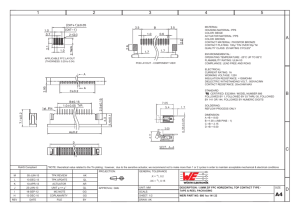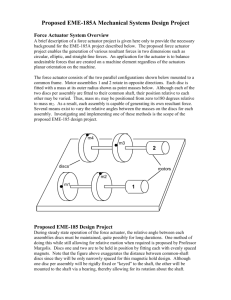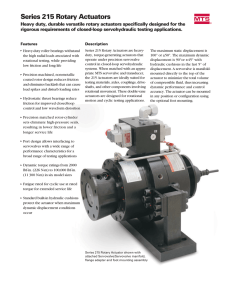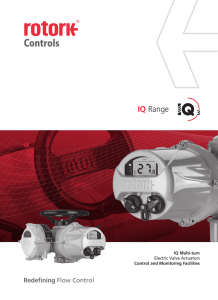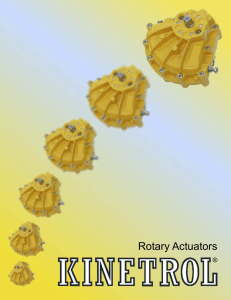Problem Set No.7
advertisement
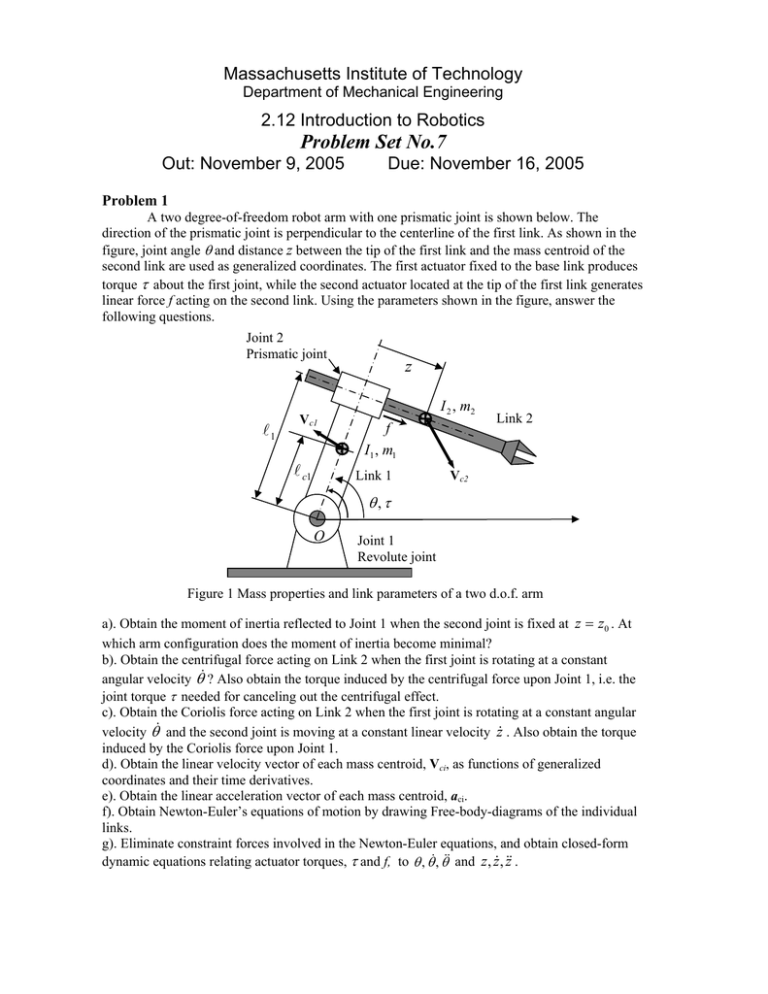
Massachusetts Institute of Technology
Department of Mechanical Engineering
2.12 Introduction to Robotics
Problem Set No.7
Out: November 9, 2005
Due: November 16, 2005
Problem 1
A two degree-of-freedom robot arm with one prismatic joint is shown below. The
direction of the prismatic joint is perpendicular to the centerline of the first link. As shown in the
figure, joint angle θ and distance z between the tip of the first link and the mass centroid of the
second link are used as generalized coordinates. The first actuator fixed to the base link produces
torque τ about the first joint, while the second actuator located at the tip of the first link generates
linear force f acting on the second link. Using the parameters shown in the figure, answer the
following questions.
Joint 2
Prismatic joint
l1
Vc1
l c1
z
I 2 , m2
f
I1 , m1
Link 1
Link 2
Vc2
θ,τ
O
Joint 1
Revolute joint
Figure 1 Mass properties and link parameters of a two d.o.f. arm
a). Obtain the moment of inertia reflected to Joint 1 when the second joint is fixed at z = z0 . At
which arm configuration does the moment of inertia become minimal?
b). Obtain the centrifugal force acting on Link 2 when the first joint is rotating at a constant
angular velocity θ& ? Also obtain the torque induced by the centrifugal force upon Joint 1, i.e. the
joint torque τ needed for canceling out the centrifugal effect.
c). Obtain the Coriolis force acting on Link 2 when the first joint is rotating at a constant angular
velocity θ& and the second joint is moving at a constant linear velocity z& . Also obtain the torque
induced by the Coriolis force upon Joint 1.
d). Obtain the linear velocity vector of each mass centroid, Vci, as functions of generalized
coordinates and their time derivatives.
e). Obtain the linear acceleration vector of each mass centroid, aci.
f). Obtain Newton-Euler’s equations of motion by drawing Free-body-diagrams of the individual
links.
g). Eliminate constraint forces involved in the Newton-Euler equations, and obtain closed-form
dynamic equations relating actuator torques, τ and f, to θ , θ&, θ&& and z , z&, &z& .
Problem 2
Figure 2 shows the schematic of a three degree-of-freedom rehabilitation bed/chair
system. The seat is tilted with Actuator 1 fixed to the base frame. The back leaf and the footrest
are driven together by Actuator 2 fixed to the seat. Note that the motor shaft of Actuator 2 is
connected to a belt-pulley mechanism to move the footrest together with the back leaf. The
headrest is moved with Actuator 3 fixed to the seat through another belt-pulley mechanism as
shown in the figure. Figure 3 shows the kinematic structure and joint variables along with
geometric and mass parameters of the individual links. Note that joint angles θ 2 and θ 3 are
measured from the seat, while angle θ1 is from the base frame.
Head Rest
Actuator 3
Belt
Actuator 1
Back Leaf
Seat
Actuator 2
Belt
Foot Rest
Base Frame
Figure 2 Powered rehabilitation bed-chair
Link 3
l3
lc3
l2
y
lc2 C2
l1
l0
O0
lc1
C1
θ2
O1
Link 0
lc0
θ2
C0
m 0, I 0
θ1
O3
Endpoint E
C3
θ3
α
m 3, I 3
m 2, I 2
Link 2
O2
x
m 1, I 1
Link 1
Figure 3 Mass parameters of the bed-chair system Figures by MIT OCW. 2
The closed-form equations of motion are in form:
τ 1 = H11θ1 + H12θ2 + H13θ3 + "
τ 2 = H 21θ1 + H 22θ2 + H 23θ3 + "
(1)
τ 3 = H13θ1 + H 23θ2 + H 33θ3 + "
where Hij is the i-j element of the 3x3 inertia matrix H = {H ij } associated with the joint
coordinates. Answer the following questions.
a) Explain the physical meaning of the inertia matrix elements H11 and H 22 , respectively.
Show which part of the link inertia is associated with each of H11 and H 22 . Be sure
which type of motion, translation and/or rotation, is involved in H11 and H 22 .
b) Based on the physical interpretation in part a), obtain H11 and H 22 , respectively. Use the
mass parameters shown in the figure: mi is mass, Ii the moment of inertia at the centroid
Ci ; A ci the distance between i-th joint axis and the mass centroid of the link.
3



